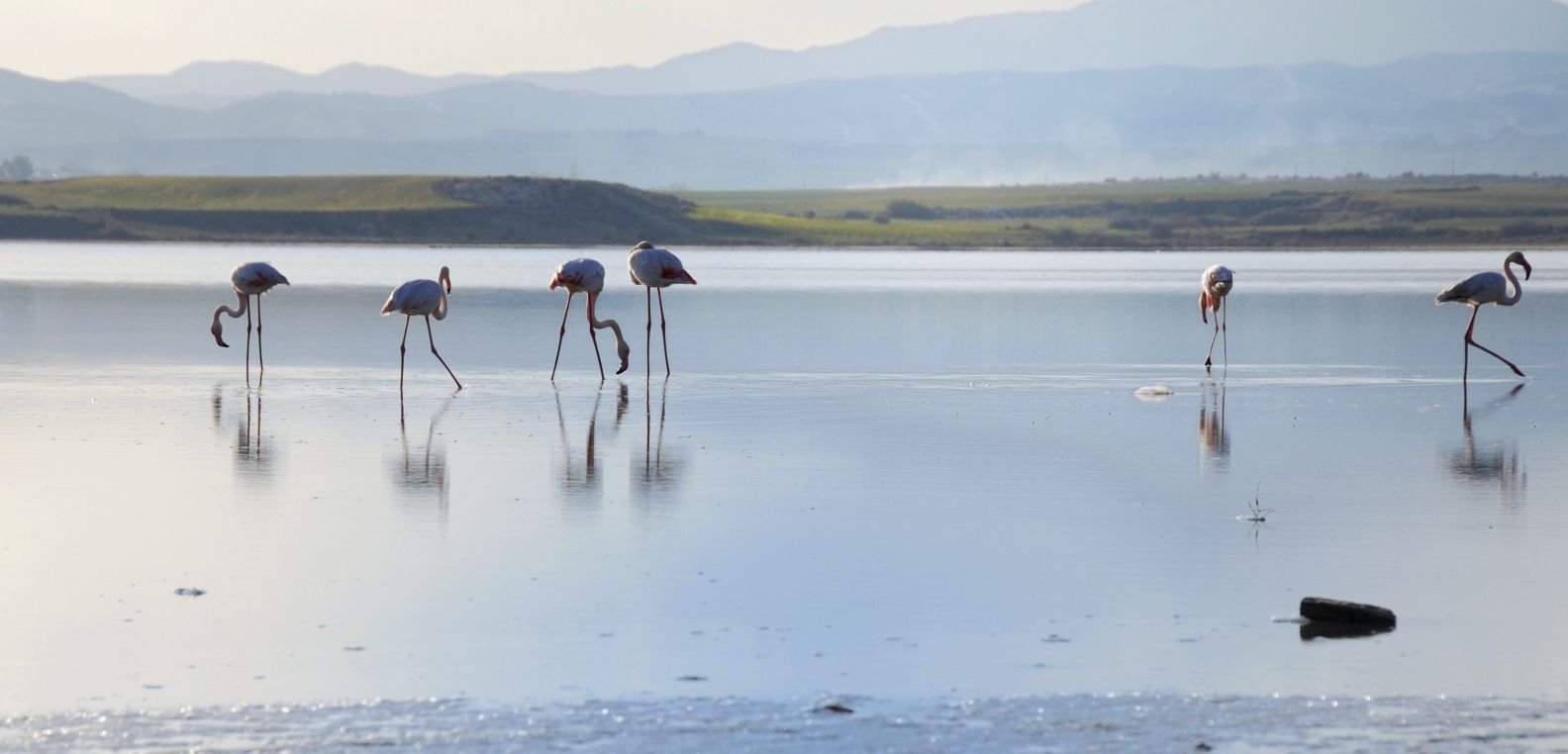Larnaka’s Salt Lake

Larnaka’s Salt Lake is one of the popular natural attractions of Cyprus and it is located southwest of the homonymous city, next to the airport and the McKenzie beach.
It is a landscape of unique beauty and is declared as a Natura 2000 site, Special Protected Area under the Barcelona Convention and an Important Bird Area (IBA). It is a complex network of four saline lakes that cover an area of 2.2 square kilometers and three of them are connected. All four of them are salty as the sea water penetrates the rock that separate them from the sea. The tradition says that the lake owes its salinity to St Lazarus of Larnaca, who when an old woman refused to give him food and water, he replied "Let your vineyards dry and become salt lake forever."
The main lake is the biggest and deepest with a surface of 5 square kilometers, 11.5 kilometers in diameter and it is 7 to 10 feet under the sea level. On the west coast there is Hala Sultan Tekke , the most important place of pilgrimage for Muslims of Cyprus, while at the northwest is an archaeological site of the late Bronze Age era.
Water in the wetland comes from rainfall, by surface flow of sea water in the lake and underground water. The strong sun combined with the wind causes 75% of the water to evaporate. There is water only between November and April therefor during summer there is only a thick layer of salt.
The Larnaca Salt Lake is protected by the Ramsar Convention in 2001, and has been designated as Special Protection Area since 2005. Being a habitat for at least 80 bird species, it is particularly known for its thousands of flamingos wintering there, eating shrimp which gives them the pink color. If the visitor is lucky and visits the appropriate time, he/she will enjoy a unique and rare sight.
Other birds that arrive here are pelicans, herons, rednecks, whiteheads etc. The fauna is also very rich as many plants and trees thrive in the area such as acacia, anemone, safflower, orchid, pine, thyme etc.
The Salt Lake of Larnaka has a rich history, starting from prehistoric times. Then, with larger dimensions than today and open to the sea, it was essentially a bay allegedly used as a port since in the west bank stone anchors and the ruins of a city-port of the Late Bronze Age were discovered. During the Mycenaean times it served as transportation and copper export center while in the 9 th century BC it Phoenicians also traded copper and salt. In Hellenistic and Roman times the salt of Cyprus became well known in other countries and in the Middle Ages it was a state monopoly and was kept in public storage. During the Venetian times salt continued to be the main export product of Cyprus, bringing large tax profits to the Venetians and 70 ships a year arrived in Venice loaded with salt from Cyprus. During the period of British rule, export stopped and salt was used for domestic consumption.
For the gathering of salt in the past, the lake was divided into sections and eight people were employed in each one who gathered the salt with shovels and placed it in baskets which they then carried with donkeys on the shores of the salt lake.
The Larnaka’s Salt Lake is one of the two saline lakes which are important natural habitats of Cyprus. The second one is the Salt Lake of Akrotiri in Limassol province.
For those who love hiking, there is a path around the lake moves, starting from the eastern shore and ending to the Hala Sultan Tekke. Nearby there is an organized area for those wishing to picnic. Finally, there is a bird observatory near the sewage treatment plant.
